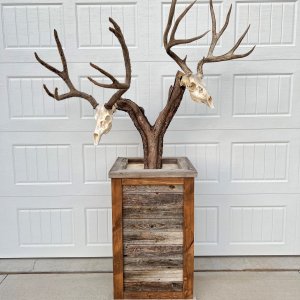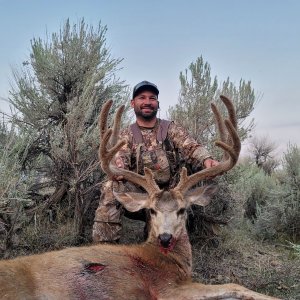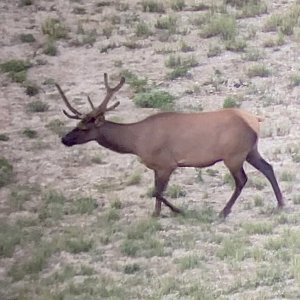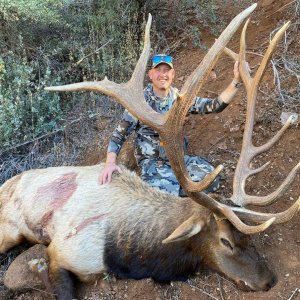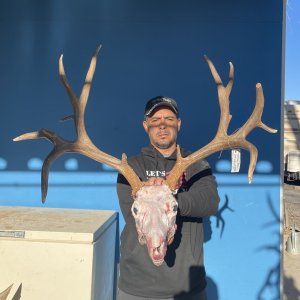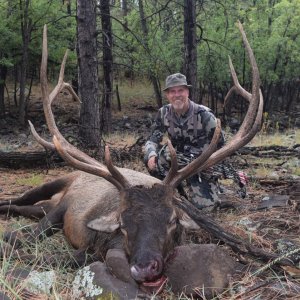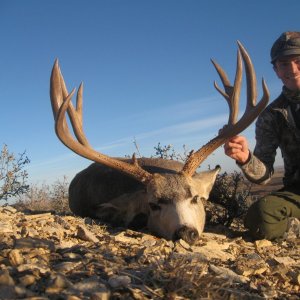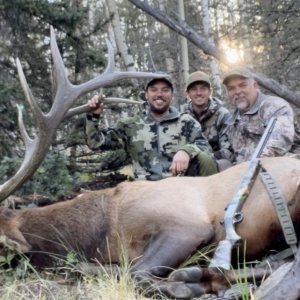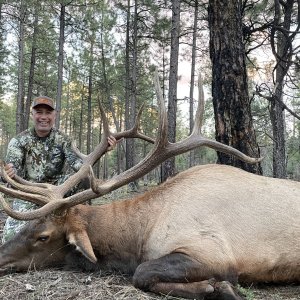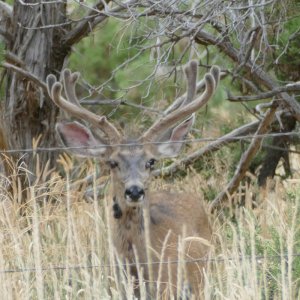Here is the DWR information regarding this pneumonia outbrake.
Utah Wildlife News
Posted Monday, 01 March 2010
Disease kills NE Utah bighorn sheep.
Vernal ? Bacterial pneumonia, which has been raising havoc with bighorn sheep herds in other Western states, has found another set of victims on Goslin Mountain in northeastern Utah.
A bighorn sheep from Montana is released onto Goslin Mountain in 2007.
Recent surveys by Utah Division of Wildlife Resources (DWR) biologists have found most of the bighorns in the Goslin herd near the Green River in Daggett County are infected with the disease.
"We've noticed a decline in the Goslin population for a couple of years, but we weren't able to identify the reason until recently," says Charlie Greenwood, regional DWR wildlife manager.
In mid-February, Lowell Marthe, area wildlife biologist for Daggett County, saw a bighorn coughing. He then surveyed other animals in the area to determine if the coughing was an isolated event. Unfortunately, he found other bighorns coughing too. And some of the sheep were acting quite sick. Samples of lung tissue taken from several animals confirmed the animals had pneumonia.
The Goslin herd is relatively new. Bighorn sheep captured in Montana were reintroduced to the area in 2004 and 2007.
The population increased fairly rapidly after the 2004 release, which is normal for a new herd. That didn't happen with the 2007 release, however. Lamb production and survival were poor and the total number of sheep started to decrease.
The population estimate dropped from 65 to 40 between 2008 and 2009.
Tough decisions
When a deadly disease infects a herd, wildlife managers have very few options. Native wild sheep have several things going against them: they're very social animals, and they've evolved with few defenses or immunities against diseases. As a result, most diseases can be deadly to wild sheep. And those diseases can rapidly infect all the bighorns in an area.
Wildlife managers are left with two choices: watch the sheep die or try to keep the disease from spreading to other bighorns by severely culling (taking) animals from the herd.
"We've been watching similar events unfold in Montana, Washington and Nevada," says Leslie McFarlane, DWR wildlife disease coordinator. "There's no known cure for pneumonia in bighorns. [The good news is that] it's not hazardous to livestock or humans.
"Taking infected sheep is the only way to prevent the disease from spreading to other bighorns in the herd," McFarlane says. "It's also the most humane thing to do. When sheep get pneumonia, it's almost always fatal. We want to end the suffering as quick as we can."
As of Feb. 22, 2010, the DWR had taken 26 bighorns from the Goslin herd. Biologists are closely monitoring another small band from this herd. Biologists haven't noticed any coughing, but they're concerned that these animals could also be infected.
Surveys of bighorns in nearby herds indicate that the animals in these herds are healthy.
"Our biggest concern is stopping the spread of the disease to the Bare Top, Carter Creek and Sheep Creek herds," Greenwood says. "We are still trying to locate all of the animals in the Goslin unit. It's not a pleasant task, but we know if we don't get ahead of the disease, we could lose everything."
Deadly legacy
Like many North American wild animals, ancestors of today's wild sheep crossed the Bering Land Bridge from Asia. These sheep were isolated from their cousins in Asia, Europe and Africa by the great ice sheets that covered North America during the ice ages. They evolved into the bighorns (Ovis canadensis) and thinhorns (Ovis dalli) found today.
In addition to isolating the sheep, the ice sheets kept temperatures cold and dry. These conditions helped prevent diseases from spreading. As a result, North American wild sheep evolved few defenses or immunities against diseases.
In contrast, some of the sheep populations in Europe, Asia and Africa were domesticated. Great herds of domestic animals wandered the steppes and grasslands moving north or south as weather permitted. These great herds were breeding grounds for disease. Because they frequently encountered each other, the domestic sheep?exposed to a variety of diseases?developed strong defenses and immunities.
Wild sheep are highly social animals. They seek each other out and travel in small bands or larger herds. Individual bands will often mix with sheep from other herds. This mixing allows a disease to spread quickly from band to band and herd to herd.
When domestic sheep were introduced to the Americas, they brought their exotic diseases with them. These diseases proved deadly to native wild sheep and often eliminated entire populations. Bighorn sheep, once the most abundant large mammal in the mountainous areas of the West, were nearly driven to extinction by the early 1900s. Many factors, including competition for forage, habitat degradation and unregulated hunting all played their parts, but exotic diseases were the biggest factor.
Today's bighorns are ancestors of isolated, remote bands that somehow escaped the exotic diseases rampaging through the herds as the Wild West was tamed. They still lack immunities to most diseases, and their survival depends mostly on remaining relatively isolated.
This deadly ice-age legacy?the lack of immunity to exotic diseases?is the biggest challenge still facing bighorns today.

